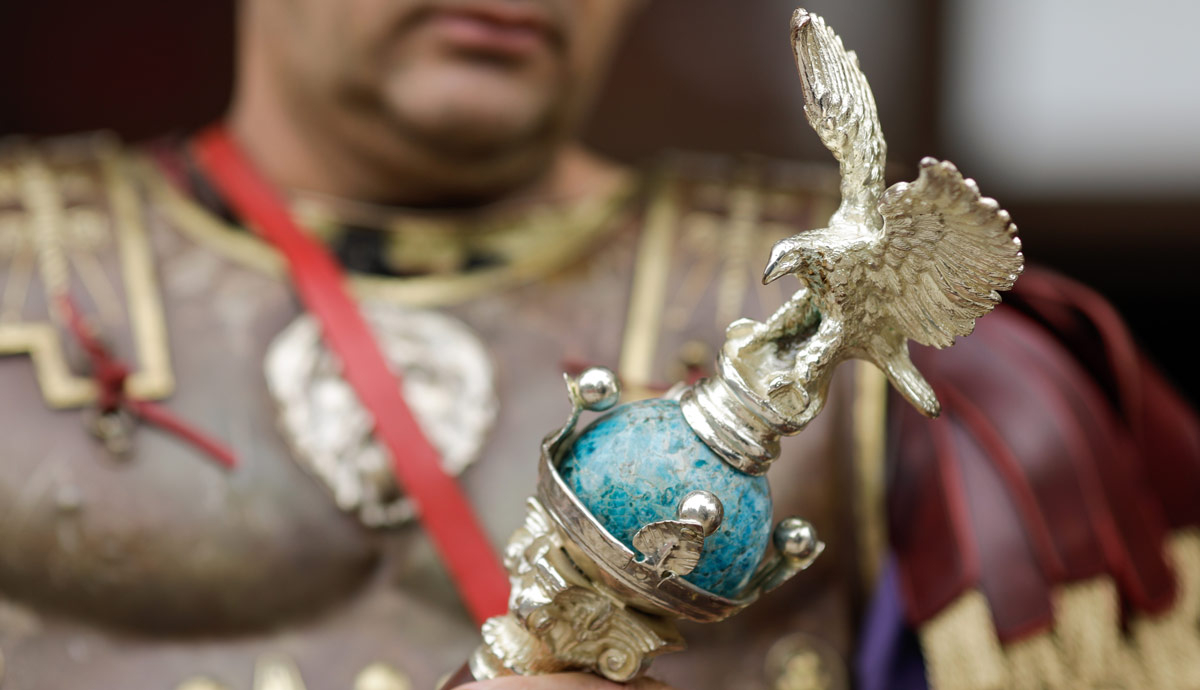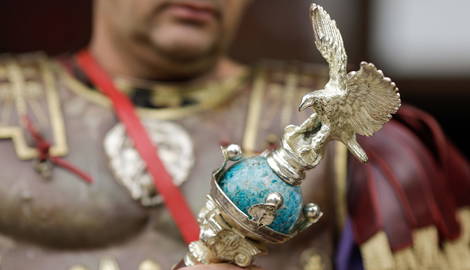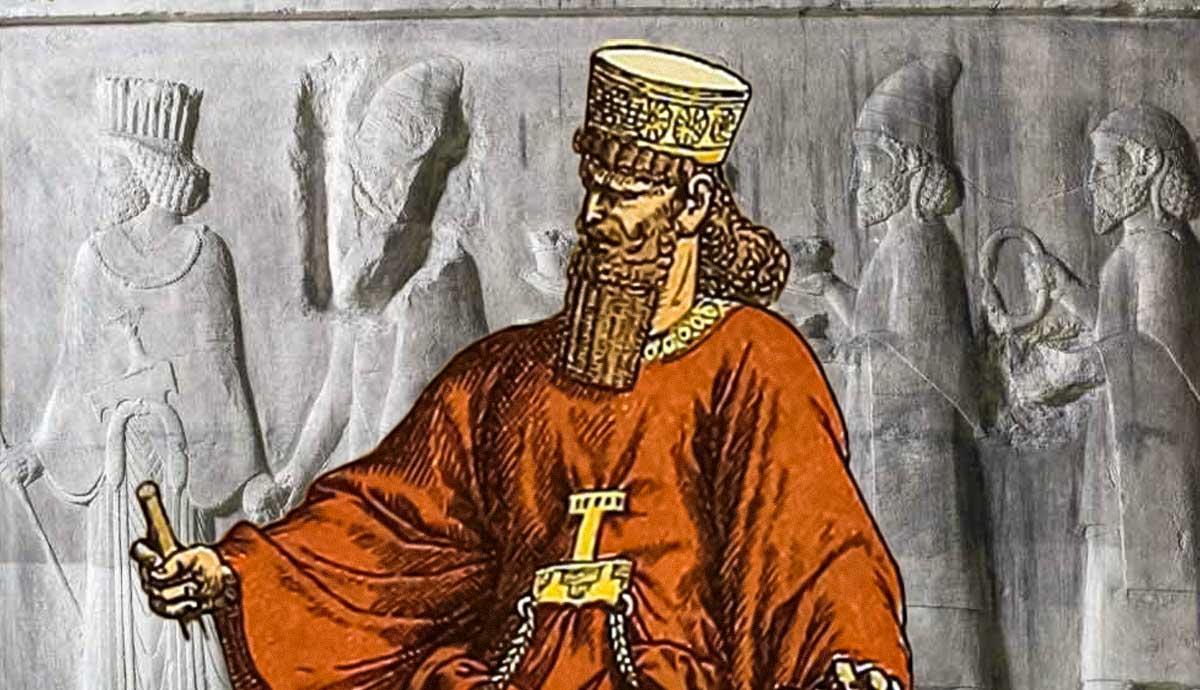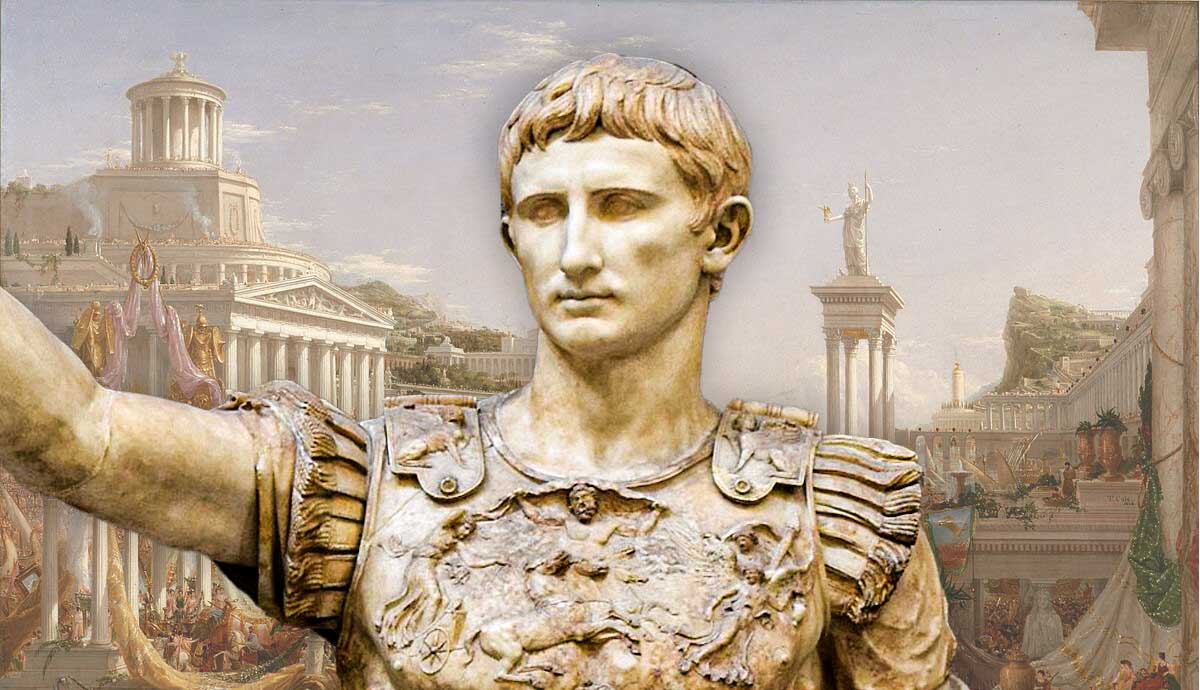
One of the main symptoms of the Crisis of the Third Century was almost constant civil wars and internal fights for power. Over the course of almost half a century (235-284), many Roman generals and other commanders were proclaimed emperors, mostly by their soldiers after a victory in battle. Most of these coups lasted for a short amount of time, with usurpers rarely leaving their original province. Because of that, ancient sources provide us with very little information about their “rule,” which is often summarized in only one sentence. Other sources, especially numismatic data, are helpful in reconstructing their stories. Five usurpers that are presented in this article offer us insight into the chaotic political reality of 3rd-century Rome. In this article, we will focus on usurpers from the western part of the Empire.
1. Pacatianus (c. 248 CE)

Pacatianus is only mentioned in two late sources: Zosimus (c. 491-518 CE) and Zonaras (12th century CE). They both call him Marinus, although we know from his coins that his full name was Ti. Cl[audius] Marinus Pacatianus. Both written accounts do not provide us with much information. Basically, they just mention that Pacatianus was a commander in Illyricum who was proclaimed emperor by his troops, only to be killed by the same troops after a brief “reign.” Danube areas of the Roman Empire were under heavy barbarian attacks during the reign of Philip the Arab (244-249), which might have been the reason behind the rebellion.

Most questions about Pacatianus remain unanswered. Zonaras simply calls him “a unit commander.” Whatever his rank was, we do not know for sure where he was stationed. Zosimus places him in Pannonia while Zonaras mentions Moesia. His capital was probably Viminacium in Upper Moesia (modern-day Kostolac in Serbia) since he minted his coins in that city.
His coins also offer possible insight into the reasons behind his murder. One of his coins features an inscription that reads Romae Aeterna Annos Millesimo et Primo. This propaganda message alludes to the celebration of Rome’s 1,000th birthday which was celebrated in 248 CE by the emperor Philip the Arab. Generally, messages on Pacatianus’s coins often mimic those that appear on Philip’s coins. This could mean that Pacatianus tried to align himself with the legitimate emperor. This resulted in his murder on behalf of his rebellious soldiers, who were against Philip.
2. Silbannacus (Late 240s/Early 250s CE)

Silbannacus is the most obscure Roman usurper/emperor ever. This is due to the fact that he is not mentioned in any of the contemporary sources or documents. His existence is only known because of the two coins minted in his name that were found during the 20th century.
Although we cannot say anything about him for certain, we can deduce something from those coins. His name appears on coins as Mar. Silbannacus. Because of his unique name, most scholars think that he might have been of Gallic, British, or Italo-Celtic origin. However, there is also a possibility that the name on the coins was spelled incorrectly. Some scholars think that his actual name was Silvannacus and in connection to Silvanus, the Roman forest god.
Coins of Silbannacus mostly resemble those of Emperors Philip the Arab, Decius, Aemilian, or Valerian, which means that they were minted somewhere from 244 to 260 CE. Given the discovery of only two coins, it is likely that their production was limited. This means that his reign was very short, maybe only a few weeks.

There are two major theories about Silbannacus’s reign. The first theory holds that he was a general who rebelled in Gaul during the reign of Philip the Arab (244-249). Both of his coins were found in modern-day France. Not only that, the depiction of Mercury on one of his coins also suggests Gaul. Mercury was a popular god in Gaul, and later Gallic usurpers (such as Postumus) also depicted him frequently on their coins.
The second theory places Silbannacus as a short-lived legitimate emperor in Rome in 253 CE after Emperor Aemilian was killed by his soldiers. The reverse on the second coin of Silbannacus is identical to those minted by Aemilian in Rome. This has led some scholars to believe that Silbannacus actually controlled a Roman mint, which would imply that he was a legitimate emperor and not a usurper. If this scenario is true, Silbannacus would have been killed shortly after on behalf of Valerian, who seized power in the same year.
3. Regalianus (c. 260 CE)

Regalianus is one of the many usurpers that historical sources mention during the reign of Emperor Gallienus (253-260). What sets him apart is that he is one of the few of them whose existence is further confirmed by coins.
Regalianus was proclaimed by the legions of Pannonia. He was preceded by a certain man named Ingenuus, who also rebelled in Pannonia in c. 259. However, we do not know much about him, and he did not leave any coins. Historia Augusta tells us that Regalianus was a dux Illyrici (military commander) before the rebellion. However, that source is highly unreliable and contains much false information, especially in the sections about usurpers. Historians now mostly think that he was rather a provincial governor of Pannonia Superior.
We do not know much else about Regalianus’s career and early life. His father or grandfather might have been a senator, Caius Cassius Regalianus, mentioned in 202 CE.

Regalianus minted coins in Carnuntum, which was probably his capital. His coins are very rare. All of them were found on the territory of the Roman Pannonia, which implies that his domain did not go beyond that province. There are a couple of reasons behind his rebellion. Firstly, Gallienus heavily persecuted the followers of Ingenuus. Secondly, the Danube frontier suffered heavily from barbarian attacks in the late 250s. The short reign of Regalianus came to an end during one such barbarian attack.
In 260 CE, not long after his coup, a Sarmatian tribe, the Roxolani, raided Carnuntum. Regalianus possibly died during that raid. However, there is also a possibility that he was killed by his own troops, or that he was defeated by Gallienus.

Regalianus had a wife called Sulpicia Dryantilla. We only know about her from a few coins minted in her name. We know from her name that she belonged to the famous and ancient patrician family Sulpicii. She might have even ruled in equal stead with Regalianus. They are often depicted together on coins. Besides that, most coins of Regalianus contain a legend AUGG, which implies two rulers. If that refers to his wife, it would make her a unique example in Roman history. Her ultimate fate is unknown, but she was probably killed together with her husband.
4. Domitian II (c. 271 CE)

Domitianus (not to be confused with the emperor Domitian) rebelled in Gaul early in the reign of Emperor Aurelian (270-275). At the time, Gaul was still part of the independent Gallic Empire (260-274). After the death of its founder, Postumus (260-269), the Gallic Empire entered into a period of political instability with several emperors and usurpers taking turns from 269 to 271 CE.
One of those usurpers was Domitianus, who is only mentioned by Zosimus as one of the many rebels persecuted by Aurelian in 271 CE. His existence is further confirmed by two of his coins. The first coin of Domitianus was found in France in 1900. For a long time, it was thought to be fake, until in 2003, a second coin of Domitianus was found in England. Zosimus does not mention that Domitianus rebelled in Gaul. However, we can easily conclude that from his coins, which are very similar to those of the Gallic emperors.

On coins, Domitianus is styled as Imperator Caesar Domitianus Pius Felix Augustus. Both coins bear the same reverse type, Concordia Militum (“Harmony of the Army”), which alludes to military support of his coup. His reign was probably very short due to the small quantity of his coins.
Domitianus possibly rebelled in the aftermath of the murder of a Gallic Emperor Victorinus (269-271). For a short time, it was not clear who was going to succeed Victorinus until his wife appointed a senator named Tetricus (271-274). After that, Domitianus probably lost support and was defeated, although his ultimate fate remains unknown. Since Domitianus was a usurper within the Gallic Empire, Zosimus’s claim that he was defeated by Aurelian might not be accurate. Domitianus could be identified with the general of the same name mentioned by Historia Augusta, who, together with Aureolus, quelled the revolt of Macrianii in 261 CE.
5. Julian of Pannonia (c. 283/284-285 CE)

Julian of Pannonia is mentioned as a usurper during the reign of Emperor Carinus (283-285) by several later historical sources (Zosimus, Aurelius Victor, Epitome de Caesaribus), who all give dubious accounts. The little that can be deduced from those accounts is the following. Julian held some sort of a position in northern Italy. He proclaimed himself emperor either in 283 CE after the death of Emperor Carus or in 284 CE after the death of his son, Emperor Numerian. He was defeated by Emperor Carinus in 285 CE, either in Italy or in Illyricum.
Epitome de Caesaribus calls him Sabinus Julianus, a name that does not appear in other sources or on his coins. His full name, as it appears on coins, was Marcus Aurelius Julianus. To make matters more confusing, sources mention two more usurpers named Julian in the 280s—one in Africa and one in Italy.

Julian briefly controlled a mint in Siscia (Pannonia Superior), which produced several types of coins in his name. One of those types features the personification of two Pannoniae on the reverse, i.e. provinces of Pannonia Superior and Pannonia Inferior. It is not clear whether Julian controlled both Pannonian provinces, since there are preserved inscriptions dedicated to Emperor Numerian from Pannonia Inferior. In that case, the aforementioned depiction on coins was simply Julian’s propaganda that aimed at the support of the Pannonian legions. It is entirely possible that Julian initially revolted in northern Italy and later conquered parts of Pannonia around Siscia.










